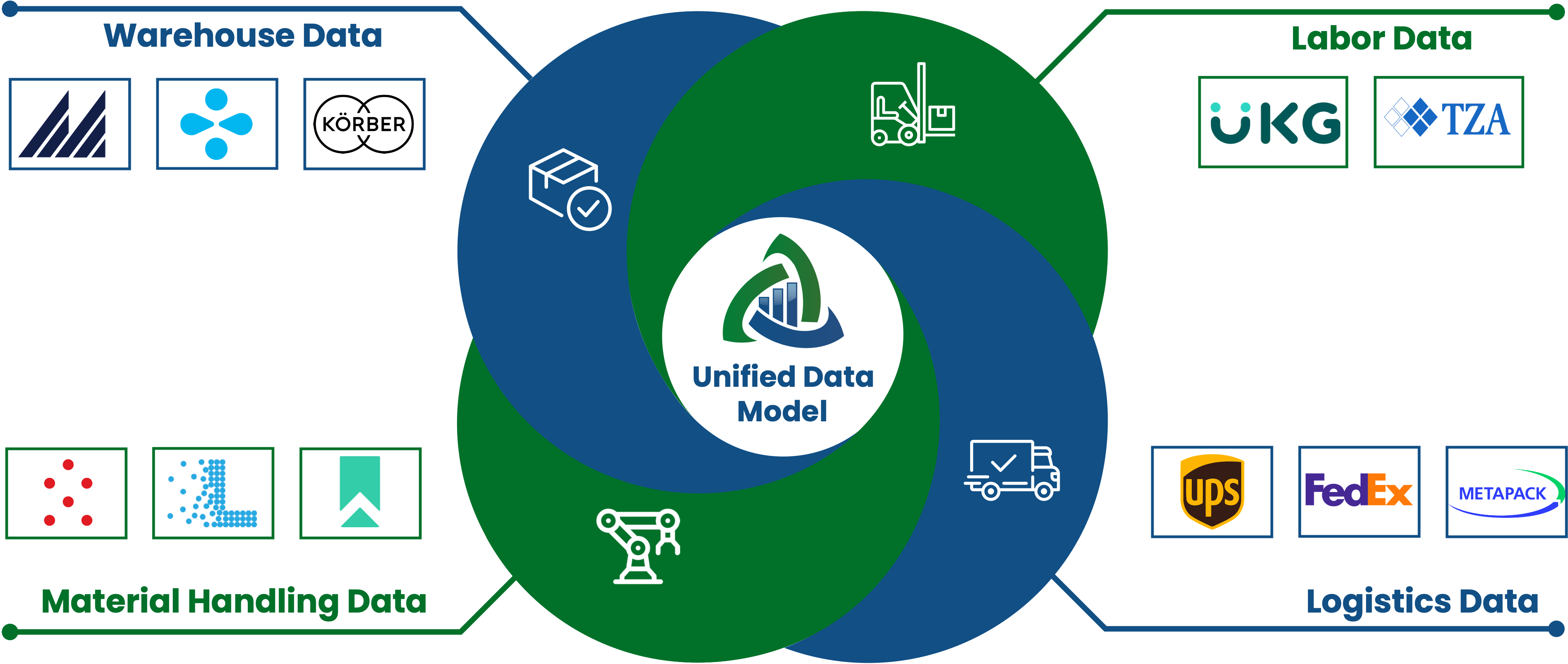Why the Silos? by Daniel Breiner For years, we have observed how many companies manage their supply chains through a fragmented structure, …
Navigate through the maze of intricate and disparate supply chain data effortlessly with Agillitics’ Supply Chain unified data model, simplifying complexities and illuminating streamlined pathways for informed decision-making.

"With AgiSight's supply chain unified data model, we now have an unparalleled insight into our warehouse operations. It provides a comprehensive view of our labor force, seamlessly integrating manual, WMS-driven, and automation-driven tasks. This holistic perspective allows us to truly understand a 'day in the life' of our employees, enabling us to optimize workflows, improve efficiency, and enhance overall productivity."

By centralizing data in a unified format, organizations gain a single source of truth for their supply chain, enabling better decision-making, improved collaboration among stakeholders, enhanced agility in responding to market dynamics, and ultimately, greater efficiency and cost-effectiveness throughout the entire supply chain ecosystem.




Why the Silos? by Daniel Breiner For years, we have observed how many companies manage their supply chains through a fragmented structure, …
In today's fast-paced and data-driven world, supply chains are becoming increasingly complex. Organizations are constantly seeking ways to streamline their operations, improve collaboration, and enhance visibility across their supply chains. Enter the age of low-code analytics platforms – a paradigm shift in the direction of democratizing access to data and advanced analytics such as predictive or prescriptive insights. As the industry rapidly traverses this path, it begs the question: What are the benefits of deploying these platforms for end-to-end unified supply chain analytics?
Understanding Cost to Serve with AgiSight by Robert Fulghum Within network optimization, a cost to serve model calculates the comprehensive cost of …
Transforming Your Supply Chain: From Batch Processing to Change Data Capture by Reed Stepleman The Need for Agility in Today’s Supply Chain …
Power BI Dashboard Design for Faster Rendering by Kaitlyn Joyce In today’s data-driven world, the ability to quickly access and analyze data …
Let’s talk about delivering the supply chain of the future, today.
You have successfully subscribed to the newsletter
There was an error while trying to send your request. Please try again.